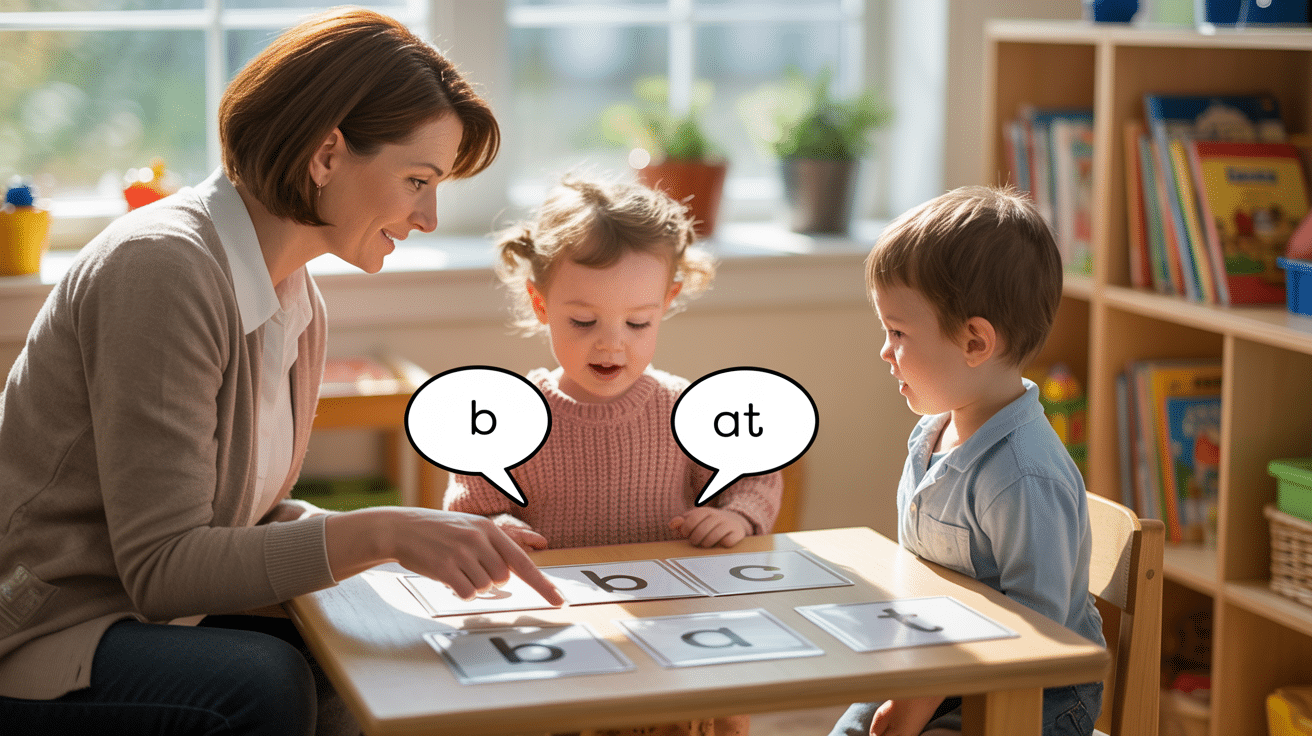Did you notice how children learn to read their first words?
Many parents and teachers wonder about the most helpful ways to guide young readers. Successive blending offers a practical method that builds reading skills step by step.
This blog will explain successive blending, how it helps with phonics growth, useful teaching tips, simple examples to try today, and common errors to watch for.
Let’s look at how this approach can make reading easier for the young learners in your life!
What is Successive Blending?

Successive blending is a reading method where children sound out each letter in a word one by one, then combine these sounds in order.
They say each sound separately before joining them together to form the complete word.
For example, with the word “cat,” a child would first say the sounds /c/, /a/, and /t/ individually. Then they would blend these sounds in sequence to say the full word.
This step-by-step process helps beginners connect letters with their sounds.
Unlike some other methods, successive blending gives children time to process each sound. It works well for short words and helps build a strong foundation for reading skills.
Successive Blending Vs. Continuous Blending
Children learn to read through different blending methods. Two main approaches stand out for teaching young readers how to put sounds together to form words.
Teachers often choose between successive blending and continuous blending based on a child’s needs and learning style.
Let’s look at what makes each approach unique and how they help children develop reading skills:
| Feature | Successive Blending | Continuous Blending |
|---|---|---|
| Speed | Slower, more deliberate | Faster, smoother flow |
| Sound Separation | Clear pause between sounds | Sounds run together |
| Example with “cat” | “/c/ – /a/ – /t/ → cat” | “/c-a-t/” in one motion |
| Focus | Individual sound recognition | Word as a whole unit |
| Best for | Beginning readers | More experienced readers |
| Memory Load | Lower (one sound at a time) | Higher (multiple sounds at once) |
| Accuracy | Often higher | Can be less precise |
The choice between these methods depends on what works best for each child’s reading growth.
The Role of Successive Blending in Phonics Development
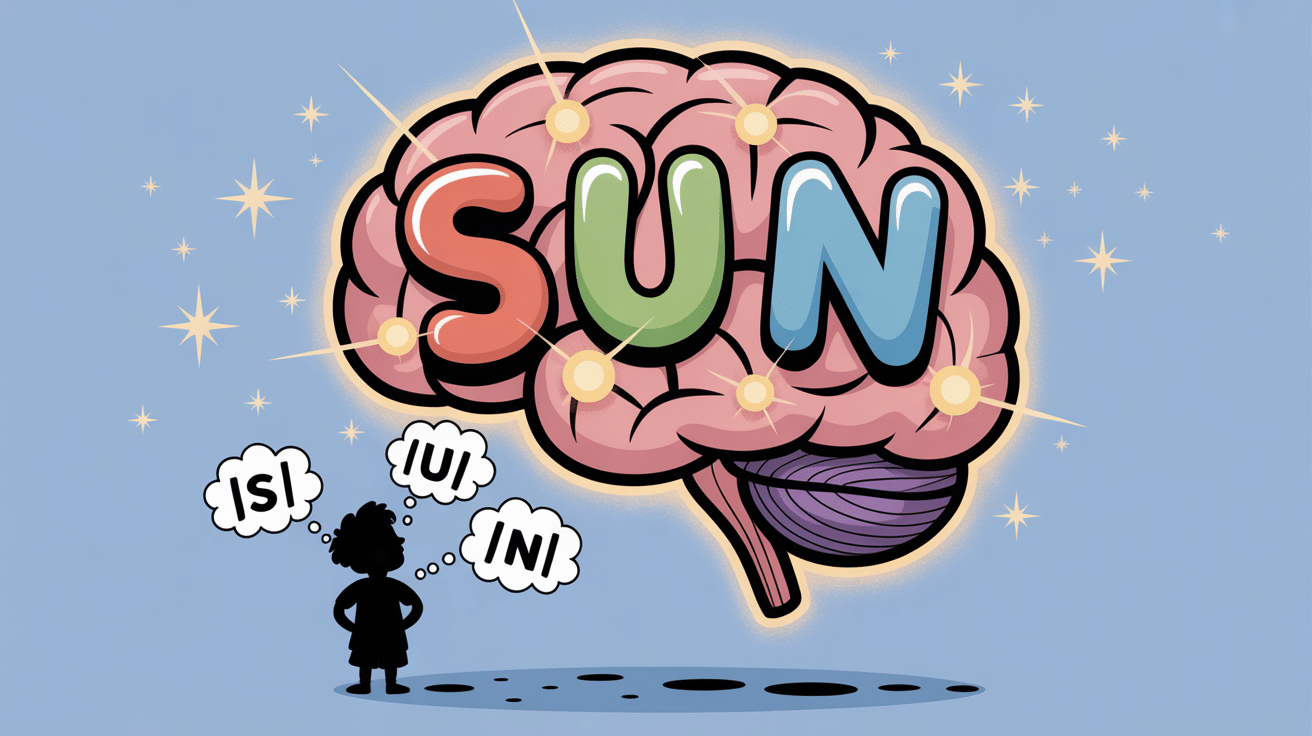
Successive blending plays a key role in helping children build strong reading skills from the start. Here’s how this method supports phonics growth:
- Sound awareness: This foundation skill helps children notice that words are made up of separate sounds. When kids practice successive blending, they learn to hear individual sounds in spoken words.
- Letter-sound connection: The method strengthens the link between written letters and their sounds. Children who use this technique often remember which sounds match which letters more easily.
- Reading confidence: By breaking words into smaller parts, kids feel less overwhelmed. This step-by-step approach gives them small wins that build into bigger reading success.
- Word attack skills: Children learn to tackle new words on their own. When they meet an unfamiliar word, they can apply the same sound-by-sound method they’ve practiced.
- Reading fluency groundwork: Though it starts slowly, this method builds the basic skills needed for smooth reading later on. The careful attention to each sound leads to more accurate reading in the future.
These benefits show why many reading programs include this method in early instruction.
Essential Strategies for Effective Successive Blending Instruction

Teachers and parents can help young readers master sound blending through these practical approaches that make learning both structured and enjoyable.
Key strategies include:
- Start simple – Begin with two-sound words like “at” before moving to longer combinations
- Add visual support – Use hand motions or counters that children can push together while blending sounds
- Keep it consistent – Practice for 5-10 minutes daily rather than long, infrequent sessions
- Show the way – Model each step clearly with proper pronunciation before asking children to try
- Respond quickly – Give immediate, positive feedback to help children adjust their technique
- Make it fun – Turn lessons into games using puppets, treasure hunts, or other playful activities
These methods help children build blending skills through steady practice while maintaining their interest and confidence in reading development.
Fun Examples for Teaching Successive Blending to Young Learners
Successive blending becomes more fun when you use these hands-on activities with your young readers. Try these examples to make learning enjoyable:
1. Sound Stepping Stones
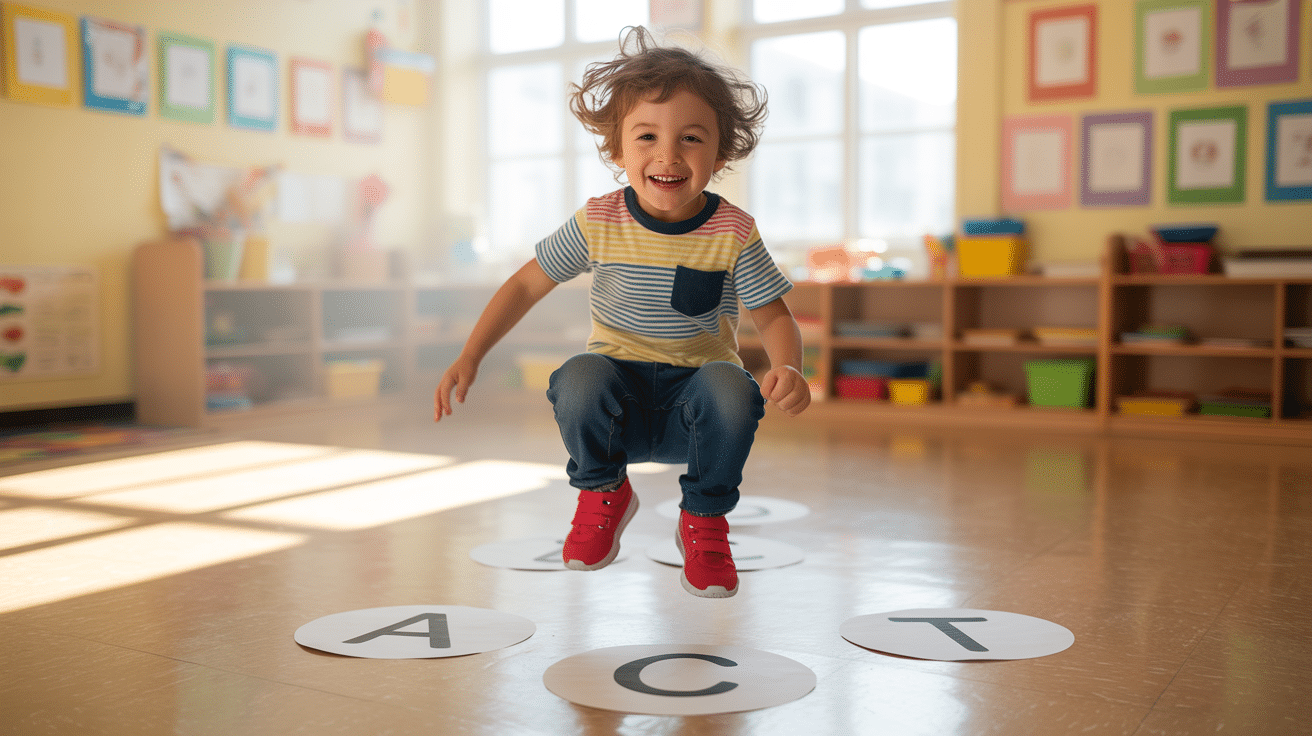
Children hop from one spot to another as they say each sound, then jump to a final spot when they blend the word. This gets them moving while connecting physical actions to reading steps.
Items needed:
| Item | Quantity |
|---|---|
| Paper circles | 3-4 per word |
| Marker | 1 |
| List of simple words | 5-10 words |
Instructions:
- Set up: Place paper circles on the floor in a line.
- Write: Put one letter on each circle.
- Demonstrate: Show how to hop and say each sound.
- Practice: Let children try with many different words.
2. Sound Cups

Stack cups with letters written on them, saying each sound as you add a cup. Then say the complete word when the tower is built. This visual method shows how sounds build words.
Items needed:
| Item | Quantity |
|---|---|
| Plastic cups | 3-4 per word |
| Marker | 1 |
| Word list | 5-10 simple words |
Instructions:
- Prepare: Write one letter on each cup.
- Stack: Add cups one at a time, saying each sound.
- Complete: Say the whole word when all cups are stacked.
- Repeat: Try with different words.
3. Sound Puppet
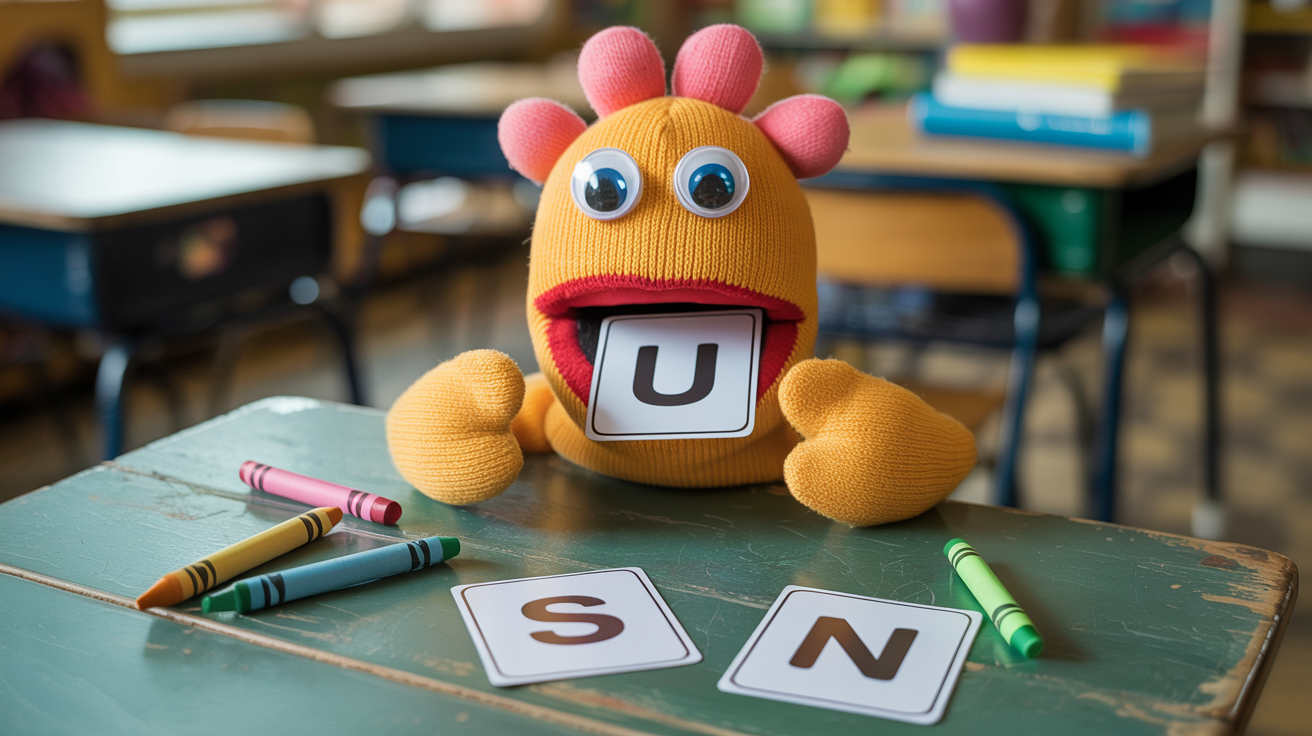
Use a puppet with a moving mouth to “eat” each sound, then have it “say” the full word. Children find puppets engaging and often mimic them easily.
Items needed:
| Item | Quantity |
|---|---|
| Hand puppet | 1 |
| Letter cards | Set of alphabet |
| Simple word list | 5-10 words |
Instructions:
- Choose: Select a simple word to blend.
- Show: Hold up each letter card for the puppet to “eat.”
- Blend: Have the puppet say the full word after eating all the sounds.
- Involve: Let children take turns working with the puppet.
4. Sound Train

Connect train cars, each with a letter, saying sounds as you link them. Then “drive” the train while saying the complete word. This shows how sounds connect in sequence.
Items needed:
| Item | Quantity |
|---|---|
| Toy train cars | 3-4 per word |
| Sticky notes | 1 pad |
| Marker | 1 |
| Word list | 5-10 simple words |
Instructions:
- Label: Put one letter on each train car.
- Connect: Join the cars while saying each sound.
- Move: Push the train forward while saying the full word.
- Switch: Change letters to make new words.
5. Sound Fishing
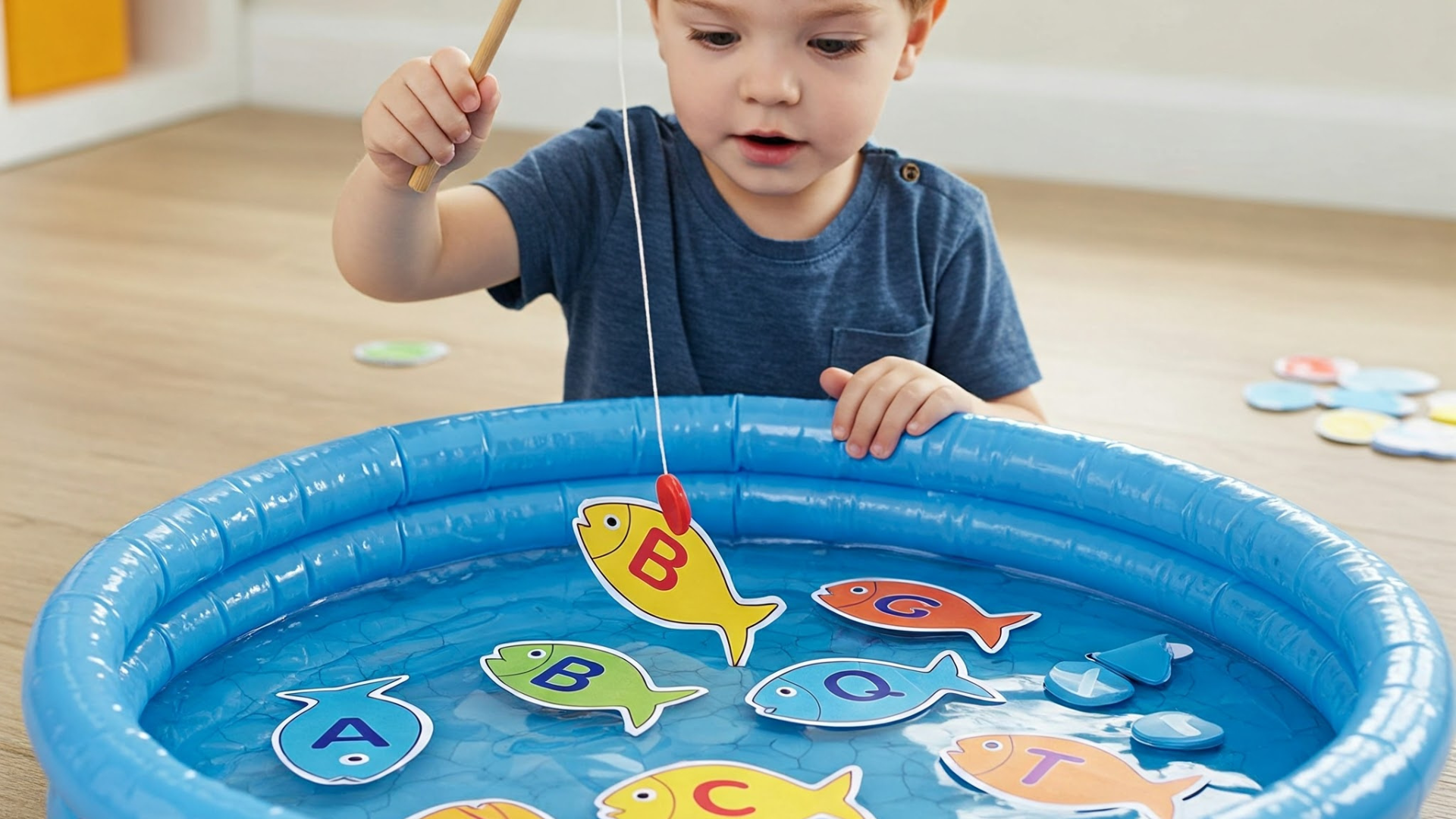
Fish for letters in a pretend pond, then line up caught letters and blend them. Children enjoy the game element while practicing reading skills.
Items needed:
| Item | Quantity |
|---|---|
| Paper fish with letters | Alphabet set |
| Small fishing rod with magnet | 1 |
| Paper clips | 1 box |
| Small pool or blue cloth | 1 |
Instructions:
- Attach: Put paper clips on letter fish.
- Fish: Catch letters to form a target word.
- Arrange: Place caught letters in order.
- Blend: Say each sound, then blend into the word.
These fun activities make successive blending practice something children look forward to rather than just another reading lesson.
Mistakes to Avoid when Teaching Successive Blending

Watch out for these common errors that might make it harder for children to master sound blending skills:
1. Moving too quickly: Children need time to process each step of the blending process. When teachers rush through sounds or jump to harder words too soon, kids may feel lost and lose confidence.
2. Mispronouncing sounds: Saying letter names instead of letter sounds creates confusion. For example, saying “tee-ah-pee” for “tap” makes blending nearly impossible. Always use pure sounds like /t/-/a/-/p/ without adding extra vowels to consonants.
3. Skipping regular practice: Successive blending skills need consistent work to develop. Many teachers introduce the method but don’t provide enough chances to practice. Set aside short daily sessions rather than one long weekly lesson.
4. Using words that are too complex: Starting with long words or words that have tricky spellings can frustrate beginners. Begin with simple three-letter words that follow basic phonics patterns before trying words with blends or digraphs.
5. Forgetting to connect to real reading: Some teachers practice blending as an isolated skill without showing how it helps with actual books. Always make the connection clear by using the same method with words in simple stories that the children can read.
These mistakes are easy to fix once you know what to look for in your teaching approach.
The Bottom Line
Successive blending gives children a solid way to crack the reading code. By sounding out letters one by one, kids build the skills needed for reading success.
The simple games and activities we’ve shared make this learning fun rather than a chore.
What’s your experience with teaching blending? Have you tried any of these activities with the children in your life? Share your stories in the comments below!

